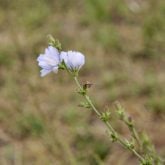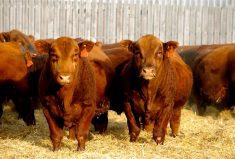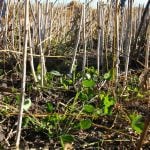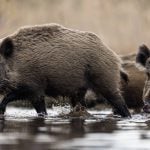An old friend called the other day. For years, Jim and I hunted together and have spent many hours discussing issues affecting hunters and the wild game industry. His concern centred around chronic wasting disease (CWD), how it had affected his family’s 2018 harvest of big game and a renewed optimism that researchers, armed with new discoveries, were moving forward with control options for CWD.
Since BSE in 2003 and the industry paralysis that followed, we always discuss transmissible spongiform encephalopathy (TSE) and the unfaltering spread of CWD in deer, moose and elk populations in Saskatchewan and Alberta.
Read Also

What to know before you go to Agribition 2025
If you’re attending Agribition 2025, this is the place to find out about tickets, dates and what’s happening this year.
Clinical CWD is cruel. Animals suffering with CWD become thin, drink and urinate excessively, have poor balance and waste away. Animals are depressed and unresponsive to people and predators. Inability to swallow accounts for the classic drooling, and often leads to aspiration pneumonia and death. Currently, no cure or preventative measures exist.
Since its discovery in 1967, CWD has appeared in a number of central and midwestern U.S. States, Canada (primarily Saskatchewan and Alberta), Korea and Norway, in both wild and farmed populations.
Jim’s family all hunt. In 2018, provincial CWD surveillance programs flagged three of the five mule deer harvested by Jim and his family as CWD positive. Meat from all five deer had been kept separate and clearly identified. On the advice of wildlife authorities, his family discarded meat from the three positive deer.
Jim’s recent communication came with a link to a news conference sponsored by the Unified Sportsmen of Pennsylvania (USP). The news conference centred around an excited announcement that USP and a research partner at Louisiana State University were on the cusp of a cure for CWD. An ongoing epidemic threatening Pennsylvania deer and elk herds would soon be contained.
Jim’s question: “Is there anything to this?”
I opened a copy of the televised news conference and listened to a cluster of excited USP board members, aflutter with the news that a bacterial organism had been identified as the cause of CWD and a host of other animal and human TSEs. The bacteria (spiroplasma) could be cultured. The prion theory of TSE etiology had been dashed.
Effective field tests, vaccines and antibiotics were at hand over the next two to three years. Dr. Frank Bastian, a neuropathologist at LSU and primary research scientist behind the revelations, listed a series of review articles from peer-reviewed journals that seemed to substantiate his findings. The articles helped explain oddities of diseases in the TSE complex of animal and human “prion-associated” entities. Speakers at the news conference raved about how Dr. Bastian’s findings would translate into salvation of Pennsylvania deer and elk herds, financial rewards measuring into billions and even the preservation of Second Amendment Rights. Taking the discovery one step further, the discovery of spiroplasma would provide long-sought-after answers to human diseases like Alzheimer’s, Creutzfeldt Jacob disease (CJD), ALS and Parkinson’s.
Speakers lauded the claim that the CWD story had got on the right track after being led astray by government agencies for many years. The strategy included a field test for CWD within a year, an injectable vaccine for captive herds within two years and an oral/nasal vaccine for free-ranging deer within three years.
I listened with a degree of skepticism. Had I missed something in the intervening years away from government and the BSE fiasco?
Krysten Schuler, a wildlife disease ecologist, examines the bacterial claim in an article posted on Cornell University’s website. The spiroplasma theory has been around for years, she writes. Schuler then lays out evidence indicating prions are the disease source for CWD. For example, bacteria have not been identified in diseased animal tissue even with various testing methods, she writes. Researchers have created synthetic prions that cause TSE-like disease. Infected animals don’t produce an immune response, which one would expect if a bacterium or virus caused CWD. As well, animals that don’t produce normal prions don’t get TSEs, she adds.
The next bundle of information came from the Texas Deer Association by way of a paper published in October 2018 by a triumvirate of research scientists and PhD consultants titled Current Scientific Knowledge About CWD. A subsequent article published by Dr. Don Davis, Fake Chronic Wasting Disease News OR “Scientific” Misinformation on CWD, excoriated all facts/assumptions about CWD not substantiated by cold hard science.
Dr. Davis states: “As a research scientist with 40 years of experience in the area of wildlife diseases, I have been regularly disappointed, disgusted, alarmed, and amazed at both the amount and frequency of alleged facts reported on chronic wasting disease (CWD). These ‘facts’ are based entirely on totally unsubstantiated rumour or — even worse — on horribly misquoted science by misguided or misinformed individuals.”
Davis remains very critical of work conducted by Dr. Stefanie Czub of the Canadian Food Inspection Agency and CWD transmission to macaques by various means. One can argue that some of the methods she and her colleagues used to transmit infection do not occur outside the lab.
Yet to argue that prion diseases do not jump species barriers, as Davis does, is wishful thinking. For years, the world sat idly by, arguing that BSE did not jump species barriers, while a disaster brewed. When the world finally admitted it could jump species and that humans could contract BSE, the world overreacted, costing the Canadian cattle industry billions between 2003 and 2010.
Scientists on both sides of the issue are quite convincing. Little wonder we confuse readers when we always stress that science is good.
Science failed us along the way before finally admitting that transmission from cows to humans can occur. It failed to recognize that recycling animal meat products transmits disease and that simple control methods could be instituted without shutting down an entire industry.
I guess what disappoints me the most is that billions of dollars have been invested in research into TSEs and the neurodegenerative diseases affecting animals and humans and — in my lifetime — there’s little to show for it. Being bold on either end of the scale is a non-winner.

















